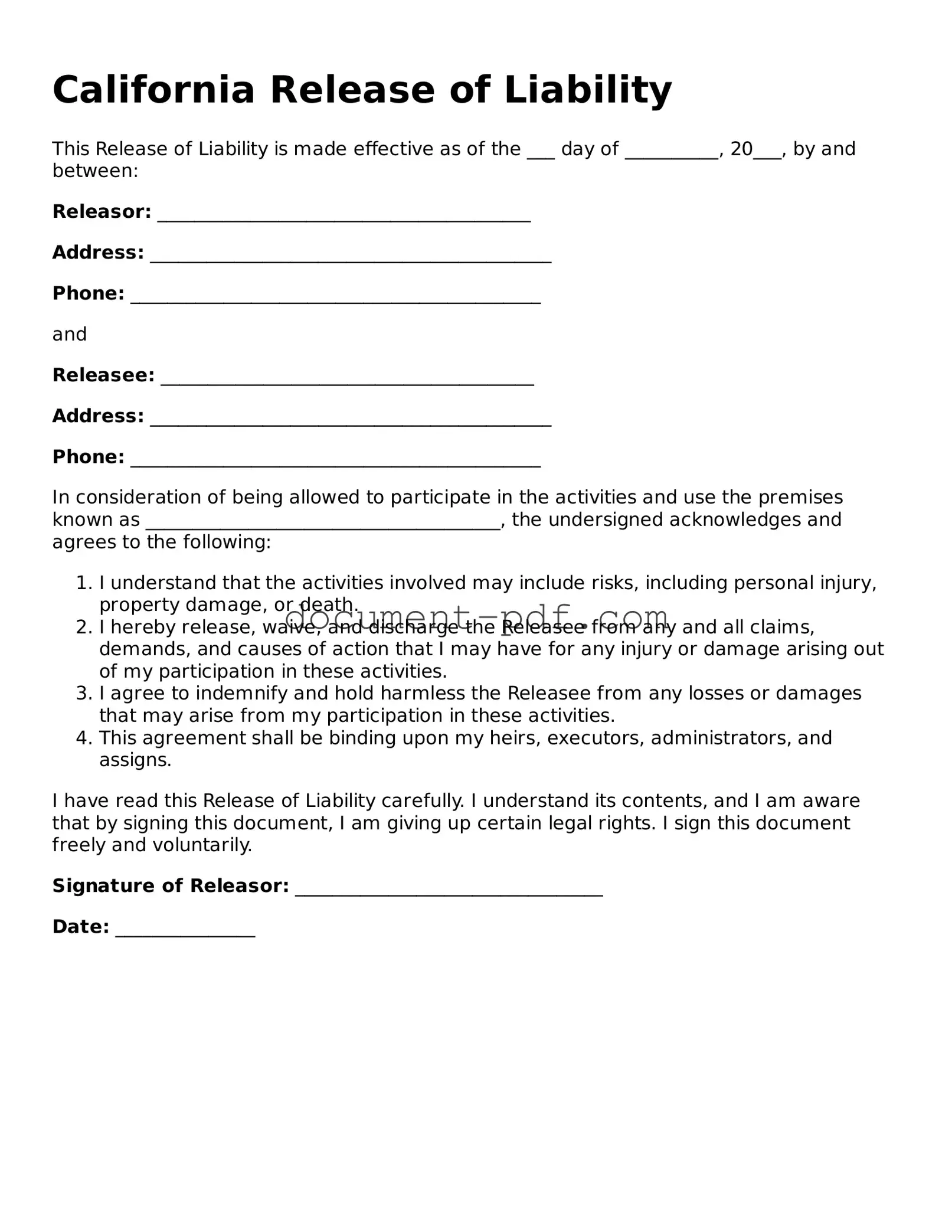California Release of Liability
This Release of Liability is made effective as of the ___ day of __________, 20___, by and between:
Releasor: ________________________________________
Address: ___________________________________________
Phone: ____________________________________________
and
Releasee: ________________________________________
Address: ___________________________________________
Phone: ____________________________________________
In consideration of being allowed to participate in the activities and use the premises known as ______________________________________, the undersigned acknowledges and agrees to the following:
- I understand that the activities involved may include risks, including personal injury, property damage, or death.
- I hereby release, waive, and discharge the Releasee from any and all claims, demands, and causes of action that I may have for any injury or damage arising out of my participation in these activities.
- I agree to indemnify and hold harmless the Releasee from any losses or damages that may arise from my participation in these activities.
- This agreement shall be binding upon my heirs, executors, administrators, and assigns.
I have read this Release of Liability carefully. I understand its contents, and I am aware that by signing this document, I am giving up certain legal rights. I sign this document freely and voluntarily.
Signature of Releasor: _________________________________
Date: _______________
